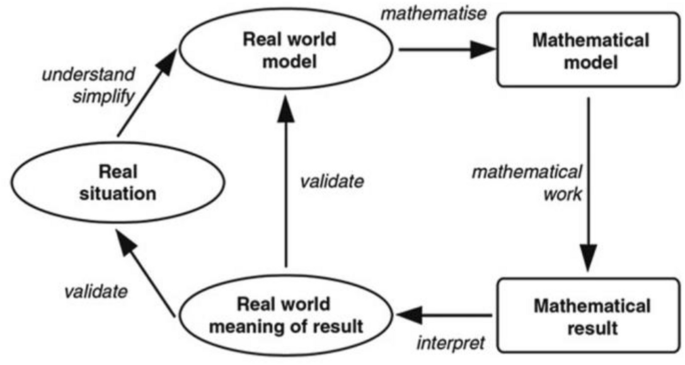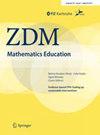在stem相关背景下建模教学的脚手架实践:来自专家和新手教师的见解
IF 2.4
2区 教育学
Q2 EDUCATION & EDUCATIONAL RESEARCH
引用次数: 0
摘要
数学建模(MM)在将科学、技术、工程和数学(STEM)整合到学校学习中起着关键作用。本实证研究建议在正式学校数学STEM背景下的MM任务教学中使用四步解决方案作为脚手架工具。研究目标是双重的;首先认识到教师在观察其MM任务教学过程中以MM为导向的脚手架实践。其次,探讨认可的脚手架实践的类型和数量的差异,同时比较专家和新手教师在STEM背景下的MM任务教学。采用多案例研究设计,我们对在STEM背景下的三个MM任务(“Mobileye”,“Gamma correction”和“GPS”MM任务)的教学过程中实施的MM支架实践进行了深入研究,这些任务由三位专家教师和五位新手教师教授,每组共五节课。研究结果揭示了三种类型的实践,以支持特定的解决方案计划步骤,制定解决方案计划步骤之间的过渡,并激励学生的MM学习。专家和新手教师之间的实践分布相似,而解决方案的每个步骤的支持对所有人来说都是显而易见的,特别是在数学搜索步骤。该研究为在STEM背景下建模教学中可能发生的必要实践提供了一个视角。本文章由计算机程序翻译,如有差异,请以英文原文为准。

Scaffolding practices for modelling instruction in STEM-related contexts: insights from expert and novice teachers
Abstract Mathematical modelling (MM) plays a pivotal role in the integration of Science, Technology, Engineering and Mathematics (STEM) into school studies. This current empirical study suggests using a four-step solution plan as a scaffolding tool during the instruction of MM tasks in a STEM context in formal school mathematics. The study goals are twofold; first to recognise MM-oriented scaffolding practices of teachers during observations of their instruction of MM tasks. Second, to explore the differences in type and quantity of the recognised scaffolding practices, while comparing MM task instruction in a STEM context of expert and novice teachers. Using a multiple case study design, we conducted an in-depth study of MM scaffolding practices implemented during instruction of three MM tasks in a STEM context (the ‘Mobileye’, ‘Gamma correction’, and ‘GPS’ MM tasks) taught by three expert teachers and five novice teachers, in a total of five lessons for each group. Findings revealed three types of practices to support a particular solution plan step, enact the transition between solution plan steps, and motivate students' MM learning. A similar distribution of practices between expert and novice teachers was revealed, while support in each step of the solution plan was evident to all, especially during the mathematical search step. The study provides a perspective on the necessary practices that may take place in modelling instruction in a STEM context.
求助全文
通过发布文献求助,成功后即可免费获取论文全文。
去求助
来源期刊

Zdm-Mathematics Education
EDUCATION & EDUCATIONAL RESEARCH-
CiteScore
6.40
自引率
10.00%
发文量
124
期刊介绍:
ZDM – Mathematics Education is one of the oldest mathematics education research journals. The papers appearing in the seven themed issues per year are strictly by invitation only followed by internal peer review by the guest-editors and external review by invited experts. The journal exists to survey, discuss and extend current research-based and theoretical perspectives as well as to create a forum for critical analyses of issues within mathematics education. The audience is pre-dominantly mathematics education researchers around the world interested in current developments in the field.
 求助内容:
求助内容: 应助结果提醒方式:
应助结果提醒方式:


